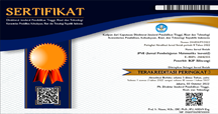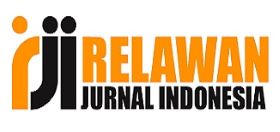KESALAHAN SISWA SMP DALAM MENYELESAIKAN SOAL PISA KONTEN SPACE AND SHAPE BERDASARKAN TEORI NEWMAN
DOI:
https://doi.org/10.22460/jpmi.v5i2.9910Keywords:
Error, PISA, Content Space and Shape, NewmanAbstract
This research is based on the low level of students completing PISA questions. One of the factors that influence the low number of students in PISA questions is that they are not used to working on problems in real context. The purpose of this study is to describe students' mistakes in solving PISA questions on Space and Shape content based on Newman's Theory, namely: reading errors, misunderstanding, transformation errors, process skill errors and notation errors or writing answers. This study uses descriptive qualitative data collection in the form of images and sentences described. The subjects in this study were eighth grade students of SMP Negeri 9 in Cimahi City. Data collection techniques in this study are by giving a test in the form of PISA questions on Space and Shape content in 2012. Based on the results of the study, showed that students experience errors in process skills caused by the lack of PISA practice exercises which are international assessments, as well as students' weakness in skills mathematics in the form of real contexts.
References
Bikner-ahsbahs, A. ; P. (2015). Approaches to Qualitative Research in Mathematics Education(Examples of Methodology and Methods). Springer Advances in Mathematics Education Angelika.
Buckchash, H., & Raman, B. (2021). Towards zero shot learning of geometry of motion streams and its application to anomaly recognition. Expert Systems With Applications, 177(January), 114916. https://doi.org/10.1016/j.eswa.2021.114916
Cahyanto, M. N. (2017). Analisis Kesalahan Siswa Kelas VIII SMP Batik Surakarta dalam Memecahkan Soal Matematika Model PISA Konten Space and Shape. Universitas Muhammadiyah Surakarta.
Clement, M. N. (1980). Analyzing Children’s error on Mathematical Taks. Education Studies in Mathematics, 11, 1–21.
Hendriana, H., & Fitriani, N. (2019). Mathematical abstraction of year 9 students using realistic mathematics education based on the van hiele levels of geometry. Jurnal Didaktik Matematika, 6(1), 1–11.
Karimah, A., & Fuad, Y. (2017). Analisis Kesalahan Siswa dalam Menyelesaikan Soal PISA. MATHEdunesa, 6(1).
Kim, S., Chi, H., & Ramani, K. (2021). Computer-Aided Design Object Synthesis by Learning Part Geometry with Surface and. Computer-Aided Design, 130, 102932. https://doi.org/10.1016/j.cad.2020.102932
Mahdiansyah, M., & Rahmawati, R. (2014). Literasi Matematika Siswa Pendidikan Menengah: Analisis Menggunakan Desain Tes Internasional dengan Konteks Indonesia. Jurnal Pendidikan Dan Kebudayaan, 20(4), 452–469. https://doi.org/10.24832/jpnk.v20i4.158
Mirhosseini, S.-A. (2017). Refections on Qualitative Research in Language and Literacy Education. Springer International Publishing.
Munawaroh, N., Rohaeti, E. E., & Aripin, U. (2018). Analisis Kesalahan Siswa Berdasarkan Kategori Kesalahan Menurut Watson dalam Menyelesaikan Soal Komunikasi Matematis Siwa SMP. JPMI (Jurnal Pembelajaran Matematika Inovatif), 1(5), 993–1004.
Novtiar, C., & Aripin, U. (2017). Meningkatkan kemampuan berpikir kritis matematis dan kepercayaan diri siswa SMP melalui pendekatan open ended. Prisma, 6(2), 119–131.
Pereira, J.; Wijaya, T.T.; Zhou, Y. . P. (2020). Learning points, lines, and plane geometry with Hawgent dynamic mathematics software. Journal of Physics: Conference Series. https://doi.org/10.1088/1742-6596/1882/1/012057
Pereira, J., Jianlan, T., Wijaya, T. T., Purnama, A., N., H., & Tamur, M. (2021). Using Hawgent Mathematics Software to Help Primary School Students to Read Clocks. Journal of Physics: Conference Series, 2049. https://doi.org/10.1088/1742-6596/2049/1/012049
Rahmatika, W. (2018). Analisis Kesalahan Siswa Kelas VII Dalam Menyelesaikan Soal Tipe PISA Konten Space And Shape di Mts Al-Mu’min Muhammadiyah Tembarak. Universitas Muhammadiyah Surakarta.
Rohaeti, E. E., Ramadan, B. G., & Fitriani, N. (2019). Cognitive Stage Relation with Creative Thinking Ability and Mathematical Learning Interests. Journal of Physics: Conference Series, 1315(1). https://doi.org/10.1088/1742-6596/1315/1/012079
Stacey, K. (2011). The PISA view of mathematical literacy in Indonesia. Journal on Mathematics Education, 2(2), 95–126.
Tjalla, A. (2010). Potret mutu pendidikan indonesia ditinjau dari hasil-hasil studi internasional.

















